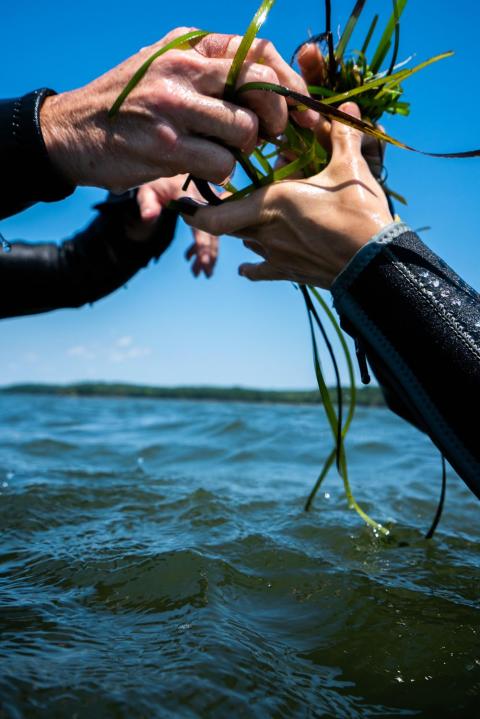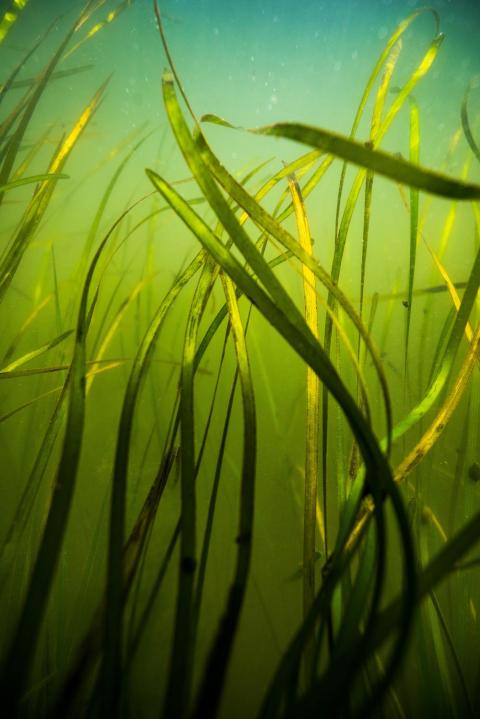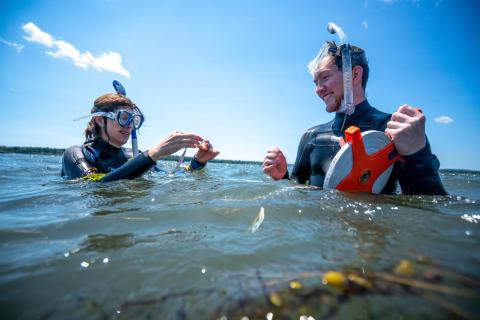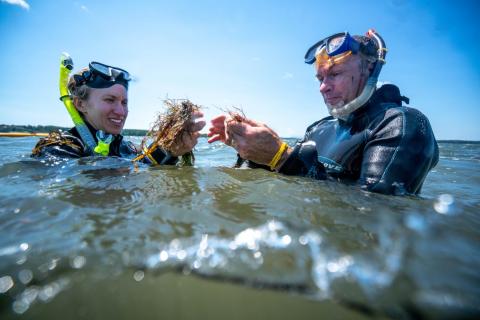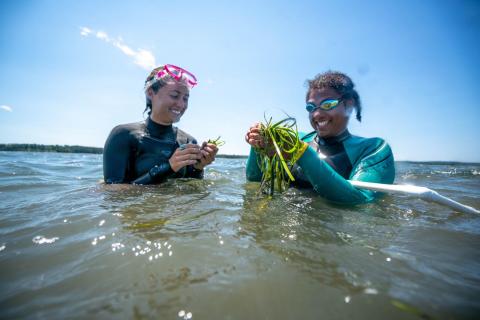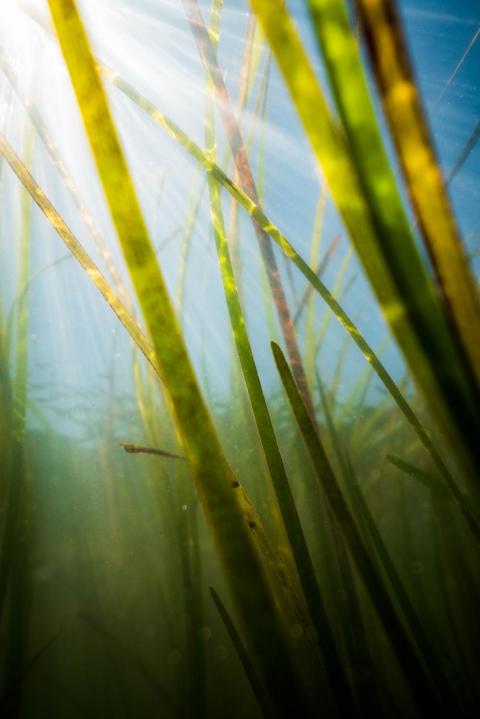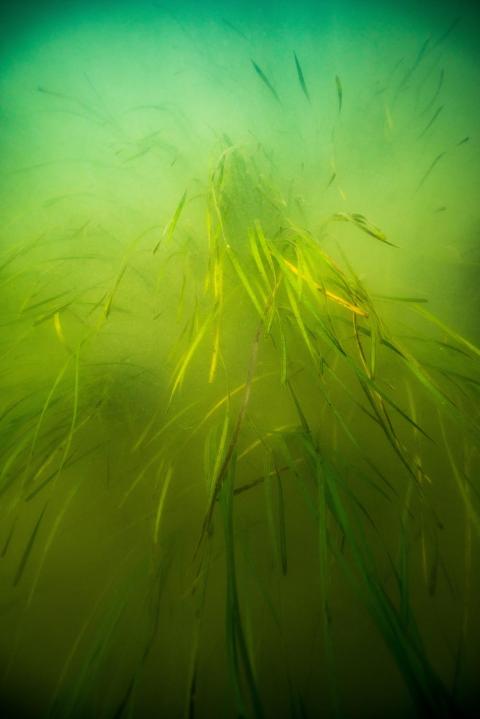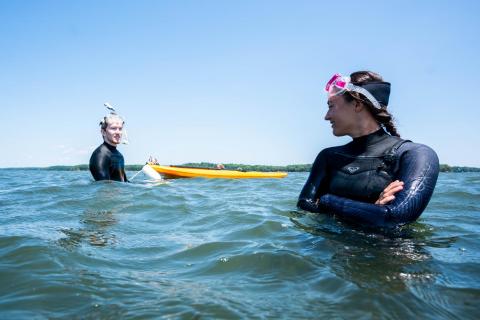Eelgrass and other seagrasses are vital to an estuary as foundation species that interact with currents to create areas of calmer water for a wide variety of fish, birds, and other animals. These currents also affect how the meadows grow. Eelgrass reproduces both clonally like a cutting from a houseplant and sexually through pollen and seeds mixed and carried by the currents. Diversity of an eelgrass meadow is likely dependent on these currents and water conditions. Genetic diversity is important for a population to grow, evolve, and weather stressors like storms or disease. Cynthia Hays of Keene State College will be exploring the links between hydrodynamics, reproduction, and genetic diversity of eelgrass in the Great Bay estuary through molecular genetics, field measurements, and mathematical models. Eelgrass meadows around the world are in decline, and this project will help researchers and managers understand past changes in eelgrass and prepare for the future.
Principle Investigator

Cynthia Hays, Ph.D.
Professor, Biology, Keene State College
chays@keene.edu
Co-Investigators
Tracy Mandel, Ph.D.
Assistant Professor, Mechanical and Ocean Engineering, University of New Hampshire
Tracy.Mandel@unh.edu
Theresa Oehmke, Ph.D.
Postdoctoral Research Associate, Mechanical Engineering, University of New Hampshire
Theresa.Oehmke@unh.edu
Thomas Lippman, Ph.D.
Associate Professor, Ocean Engineering, University of New Hampshire
T.Lippmann@unh.edu
Project Funding Cycle
2022-2023 NH Sea Grant Biennial Research Funding
Project Abstract
Sexual reproduction is the primary source of genotypic diversity in seagrass meadows, with important implications for eelgrass demography as well as both short- and long-term resilience to environmental change. While hydrodynamic feedbacks between eelgrass and abiotic conditions (e.g., water clarity) are known to be important to Z. marina’s persistence, the effects of hydrodynamics on eelgrass reproduction (e.g., allocation to clonal expansion vs. production of seeds, and the dispersal and retention of eelgrass pollen and seeds) remain poorly understood. This project explores the reciprocal links between hydrodynamics, reproduction, and the genetic diversity of eelgrass in the Great Bay Estuary, an area that has shown considerable recent eelgrass decline. We will characterize the genetic diversity of Z. marina at nested spatial scales from centimeters to kilometers, and pair this with a biophysical model of dispersal at the Estuary-scale, as well as field sampling and laboratory experiments of fine-scale fluid- vegetation-sediment interactions across meadow boundaries. This work brings together senior scientists and early career researchers from underrepresented groups in diverse disciplines across academic institutions within New Hampshire, and provides training for students in rural regions of the state. The stability of the valuable ecosystem services provided by eelgrass meadows relies on the resilience of Z. marina. This project will provide a necessary baseline for tracking ongoing demographic and genetic change in this habitat-forming species, as well as inform future restoration efforts in Great Bay.
